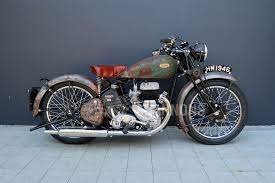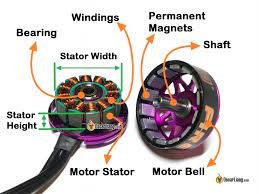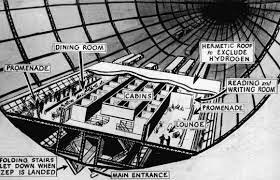-
Posts
5,297 -
Joined
-
Last visited
-
Days Won
78
Content Type
Profiles
Forums
Gallery
Downloads
Blogs
Events
Store
Aircraft
Resources
Tutorials
Articles
Classifieds
Movies
Books
Community Map
Quizzes
Videos Directory
Everything posted by old man emu
-
I'm not a member of the First People Gweagal clan, which inhabited the Kurnell area, I am of that country spiritually as I was conceived and grew up there. It breaks my heart to see that those massive sand hills are laid flat, and covered with tar and cement. This song expresses how I feel
-
And the US descends into anarchy and we lose the oil we paid for. Whose fault is it that we don't have the petroleum resources? Well, little Johnny Howard sold off our natural gas at 5 cents per litre. The international oil companies in the 1950s/60s failed to foresee the growth in the use of motor vehicles in Australia, so failed to develop refining capability. And finally, the NIMBYs then the Greenies whinged and moaned about having industrial plants within cooee of their dung heaps. I remember when the Caltex oil refinery and storage facility was built at Kurnell on Botany Bay, my father saying that if it caught fire it would be like an atomic bomb. We lived 5 kms from it across Botany Bay. That was in the 60s, and he had seen oil storage facilities blown up during WWII, and then the atomic bomb tests, so they were his points of reference for that statement.
-
Wait until the USA collapses into civil war due to its racist culture. Every other country will have learned from the USA's interventionist mistakes and will sit back and watch to slaughter. The only reason that the British stuck their noses into the US Civil War was because the British cotton millers wanted the South's cotton which the North was blockading. Fortunately, despite being thrown out of work through the lack of supply of raw cotton, Britain's mill workers declared themselves on the side of the North and anti-slavery. Workers condemned British “capitalists and journalists” for their support for the Southern states. The British bourgeoisie distrusted “Yankee democracy” and sought to preserve their profitable trading relationship with the South. https://www.wsws.org/en/articles/2015/01/05/linc-j05.html
-
Like Charity, Defence begins at home. We relied on Britain to defend us from Japan, but when the need arose, Britain was unable to meet the call due to its own home defence needs. If the whizz-bangery of Cyber warfare can knock out our infrastructure's control mechanisms with a click of a mouse key, then we should look at basic weaponry. It works in Afghanistan and any other number of economically restricted countries. We might live to see the USA suffer the same meltdown that happened to the USSR. Who says that Russia is a powerful military threat? Perhaps since the dissolution, the philosophy has changed to one of providing social benefits to its people through the ancient means of trade. All we hear of life in the former USSR is American propaganda aimed at propping up the US military-industrial complex.
-
-
The use of electricity as a power source for aircraft it totally dependent on the weight: storage capacity, and the recharge time: storage capacity. I'm sure that world-wide there is a massive amount of time being put into solving the weight: storage capacity conundrum. One point in relation to the motors is their design - inrunner or outrunner. Brushless Outrunner: The brushless outrunner motor has the output shaft, connected to a propeller in this case attached to the case of the motor. The motor shaft when spun would spins the outer motor case. The permanent magnets on the outrunner are placed on the rotor and the rotor spins on the outside case. On the inside of the motor are the stator windings which do not rotate, they are fixed in position. Brushless Inrunner: On the inrunner motor, you essentially have the complete opposite. On the outer side of the motor is the case. The case in this situation does not rotate and is fixed. The stator windings are placed on the inside face of the case. When you spin the motor shaft of an inrunner, you are spinning the rotor which also contains the permanent magnets much like the outrunner. The difference of course being that they are now at the centre of the motor. What we want from any motor or engine is Torque. For an aircraft, the torque is applied to the propeller. The brushless outrunner motor will generate more torque as a general comparison against an inrunner motor. The relationship ties in with the fact that outrunners do have a lower RPM per volt. The relationship with Kv and torque are inversely proportional. As RPM per volt (Kv) increases, torque of the motor decreases. SOURCE: https://www.radiocontrolinfo.com/brushless-inrunner-vs-outrunner-motor/#:~:text=Generally speaking brushless outrunner motors,and typically larger in length.
-
There's not a lot of difference in distance between the bottom of a Jabiru wing and the bottom of a Moran Sierra wing. However, it is not how close your bum is to the the ground that brings you into ground effect. When an aircraft flies at or below approximately half the length of the aircraft's wingspan above the ground or water there occurs an often-noticeable ground effect. Ground effect is the reduced aerodynamic drag that an aircraft's wings generate when they are close to a fixed surface The result is lower induced drag on the aircraft. This is caused primarily by the ground or water obstructing the creation of wingtip vortices and interrupting downwash behind the wing. A wing deflects the oncoming airmass (relative wind) downward. The deflected or "turned" flow of air creates a resultant force on the wing in the opposite direction (Newton's 3rd law). The resultant force is identified as lift. Flying close to a surface increases air pressure on the lower wing surface, and thereby improves the aircraft lift ratio because the deflection of the air mass increases the density of the air local to the wind - like a hovercraft. If the angle of attack and airspeed remain constant, an increase in the lift coefficient ensues, which accounts for the "floating" effect. Ground effect also alters thrust versus velocity, where reduced induced drag requires less thrust in order to maintain the same velocity.
-
If you go back the very beginning to the bit about RAAus being the administrator of all things to do with maintenance, then the RAAus has the call on who can maintain an aircraft under the RAAus umbrella. The tech manual says that a person carrying out maintenance has to have approval to carry out maintenance at the level they wish to be. It also says that to be approved at L2 by RAAus a person needs to be a member of RAAus as approval to carrying out maintenance at an L2 level is a benefit of membership. Those LAMEs who decide for whatever reason to regularly maintain aircraft under the administration of the RAAus will become non-flying members. The cost of that membership (~$120) is insignificant if there is a good flow of work from operators of RAAus administered aircraft.
-
I think someone has dropped himself in!
-
Seems that what is needed is someone with the training and experience to write up an explanation of possible sources of radio interferences and the methods one could use to eliminate interference.
-

Trailers for Trikes
old man emu replied to cscotthendry's topic in Trikes and Microlight Aircraft Usergroup
Don't you know that it is unacceptable on this forum simply to state an idea? You must lay out the whole project, Chapter and Verse, with full technical, economic, environmental impact and indigenous involvement reports? -
During the documentary they hit aluminised doped fabric with a spark. It did catch fire, but the burning was slow, much like the amount of burning you'd get from an ember dropped on a carpet. It is true that a mixture of aluminium powered, cotton fabric and dope could be explosive, but only if all the ingredients were powdered so that there was a massive surface area for combustion to occur over. When you add aluminium powder to dope and apply it to fabric, the dope will react with the fabric, but the aluminium is locked in the mixture with the dope. The air can't get into the mixture quickly enough to have it combust (explode) instantaneously. Think what happens if you leave a snag on the barbie. The outside will burn to charcoal, but if you cut that away the filling is still edible.
-
That was one hypothesis, but during the documentary is was said that if the doped covering was the cause of the spread, then the fire would have burnt for many hours. If you watch the spread of fire you will see that the flame front moves internally from the rear to the nose. In fact, in the latter part, you can see the flame front venting out of the tip of the nose before the skin rearward is engulfed in flames. Can you recall back in high school science generating hydrogen in a test tube, then igniting it? The hydrogen and oxygen combined as the flame front moved down the test tube. The combustion products and inert content of the air were pushed out, creating a vacuum at the bottom of the tube. As the last of the gases left the tube, air under pressure rushed in, making a popping sound that is what you hear when you pull a cork from a wine bottle. The airframe covering, being relatively tough and tear resistant, acted like the walls of the test tube, confining the flame front inside the body. That's why you see the flame front moving inside the body. The hydrogen autoignition temperature, the temperature of spontaneous ignition in air, is 500 °C (932 °F). The plasma temperature of a spark discharge is almost 5,000-6,800 C. The dowels, were placed on the metal frame in order to keep the fabric from chaffing. Much like the way we put tapes on the top edge of wing ribs before fitting the covering. An unforeseen consequence was that the dowels created an air gap between the metalised covering (due to the aluminium powder in the final dope coating) and the metal frame. That air gap was the dielectric that allowed the whole airship to become a capacitor. What benefits did we get from study of this disaster? Although not recognised as a factor in the disaster until this hypothesis, we have long had a recognition of static electricity, and this has resulted in the use of anti-static wicks on the trailing edges of wings and tailplanes. Another is that we ensure that when refuelling, we attach a grounding lead to the aircraft to discharge any static electricity. If you have a fabric covered aircraft, then it would be wise to attach anti-static wicks, and maybe even drag an anti-static wire from an undercarriage leg. Back in the day when the harbour Bridge toll was collected manually, there were earth wires sticking up from the roadway that scrapped the underside of vehicles, discharging static electricity before the toll collectors got zapped.
-
My pleasure. Too bad the documentary is not readily available. It was one of the better US produced ones. A point to note: sometimes people say that the Hindenburg collided with its mooring mast. That is not correct. The error comes from the camera viewing the airship with the mast between the camera and the airship. If you watch most of the films, the airship was out in the open field when the fire started and it remained out there.
-
Thruster's post giving a real example does clarify the jurisdictional issue. Basically, in the case that Thruster described, Joe Citizen could have done exactly what the RAAus did and reported straight to CASA. This shows that RAAus has no authority. A good case in this digital age for the manuals to be made available in pdf format so that people could have ready access to the contents. I'm always going to the State and Federal sites to access Acts and Regulations, but you do hove to know what you are looking for to find the correct bit of legislation.
-
Is it possible that once we develop ways of applying renewable energy to moving people and goods around the place, then what we use from decomposed dinosaurs for doing that job would be used for making recyclable products like the multitude of plastics and fibres. We would still be pulling oil from the reserves, but at the end of their useful life, a lot of products could be recycled. There will be losses, but the rate of loss wouldn't be as fast as it is by burning oil and coal for power.
-
An interesting submission, which seems logical - 320kg MTOW limit in 95.10 and the aircraft is out of RAAus jurisdiction. But how does that compare to this situation in the Law: Speed limit is 100 kph. You do 110 kph. Has the Law the power to punish you? I'd like to put the argument that in the example of MTOW of aircraft, the RAAus is like a stockman working the flank of a mob of cattle. While the mob moves as a compact herd, the stockman does not have to react, but as soon as one beast moves out of the mob, it's his job to push it back. The power of the RAAus is to ensure that the mob stays together, and to push breakaways back. That can be done in a number of ways from a warning to handing over to CASA for the full works. That leaves CASA to concentrate on other areas of licensing and maintenance, where they now only seem to be worrying about fare-paying users, both passenger and freight.
-
The destruction of the airship Hindenburg was probably the first disaster reported by public radio broadcast and filmed as it happened. Initially there were thoughts that it was an act of sabotage, but both the USA and Germany (at that time Nazi Germany) agreed that sabotage could be ruled out. Since then a number of hypotheses have been propounded as to the cause of the ignition. The Hindenburg the Graf Zeppelin we well-used aircraft with lots of safe hours of operation. The only real safety concern was that the lifting gas was hydrogen. The USA was the World's producer of the inert gas, helium, but would not sell it to Germany. The Zeppelin company had over 30 years' experience with handling hydrogen, so they had covered the foreseeable risks. It is known that the Hindenburg was out of trim as it approached its destination. It was down at the rear. The obvious cause of this was that it was loosing the lift from hydrogen in the rearward gas bags It doesn't seem that the rate of leakage was anything like a bursting balloon, more like a slow leak in a tyre for a nail. So within the body of the aircraft, there was a mixture of air and hydrogen, which is highly combustible. But for that to happen, there needs to be an ignition source. Passengers and crew were carried in an hermetically sealed area, under the gas bags. In any case, one would expect the leaked hydrogen to concentrate in the upper regions of the body. Crew members could move through the aircraft as they carried out their duties, but they would have been trained in safe work practices. As the Hindenberg was approaching its destination, it had to go into a holding pattern because wind and rain were preventing an arrival. So, the outer covering was wet from the rain. Also, any object moving through the air, and the Hindenburg's flight had been about two and a half days, will develop a static charge on its surface. As the aircraft approached the mooring tower, the crew dropped two ropes to the ground crew. It is the electrical behaviour of these ropes that is a factor in the creation of the ignition source. The most recent hypothesis for the creation of the ignition source is based on the properties of an electrical capacitor. A capacitor is basically two conductors separated by an insulator. In the case of the Hindenberg, one of the conductors was the airframe, and the other was the aluminium powder contained in the dope that was applied as a final coat to the aircraft covering. The hypothesis is that when the ropes were dropped, they completed and electrical circuit between the statically charged airframe covering and the ground. We can describe what happen this way. The voltage, Vo comes from the static electricity present on the aircraft. The "1" is a "switch". The white rectangle is the outer covering, and the black rectangle is the airframe. The orange rectangle is the ropes going to the ground crew. While the aircraft is in the air the static electricity can't go anywhere. As soon as the switch is closed in position 1 the battery is connected across the capacitor, current flows and the potential difference across the capacitor begins to rise but, as more and more charge builds up on the capacitor plates, the current and the rate of rise of potential difference both fall. . Finally no further current will flow when the potential difference across the capacitor equals that of the supply voltage Vo. The capacitor is then fully charged. As soon as the switch is put in position 2 a 'large' current starts to flow and the potential difference across the capacitor drops.. As charge flows from one plate to the other through the resistor the charge is neutralised and so the current falls and the rate of decrease of potential difference also falls. Eventually the charge on the plates is zero and the current and potential difference are also zero - the capacitor is fully discharged. Note that the value of the resistor does not affect the final potential difference across the capacitor – only the time that it takes to reach that value. The bigger the resistor the longer the time taken. And therein lies to clue to what actually happened. The landing ropes were made of Manilla hemp, not highly conductive, so their initial resistance was high. As the ropes were wetted by the light rain, their resistance decreased until at some point the voltage stored in the "capacitor" was high enough to jump the air gap between the outer aluminium-containing outer covering and the metal airframe which was attached to the landing ropes. The spark ignites the hydrogen/air mixture adjacent to the spark and the subsequent flame front moves thought the airspace around the gas bags, igniting the hydrogen/air mixture in the same way that a flame front moves across a cylinder in the combustion stroke of an internal combustion engine. This edited film shows the lead up to the start of the destruction with the dumping of water ballast and the dropping of ropes. Unfortunately, it doesn't show the escape of the flames from the rear of the fuselage before the flame front moves forward as the front of the aircraft pitches up due to the buoyancy of the forward gas bags. This "capacitor" hypothesis was the subject of a documentary which was broadcast in Australia on 11/4/21. As part of that documentary, after displaying that the hypothesis was sound, the scientist conducting the investigation calculated how long it would take a capacitor the size of the Hindenburg to charge up. He obtained a time of 4 minutes and a few seconds. Coincidentally, that was the time between the dropping of the ropes and the first signs of fire. There have been other hypotheses as to why the aircraft was destroyed in just 90 seconds. That's a tale for another time.
-
There's nothing much on the 'Net about the Cape Bouvard Investments battery. However, it does not seem that the idea is Sarich's. https://www.sciencedaily.com/releases/2021/03/210322091632.htm Regardless of who came up with the idea, the end product is a big advancement with estimates that such a battery could reach an energy density of 75 Wh/kg and a stiffness of 75 GPa. This would make the battery about as strong as aluminium, but with a comparatively much lower weight.
-
There will always be problems to overcome. I doubt if anyone here is on the crest of the wave in the area of battery science. However, if we know anything from living through the past 50-60 years is that, given a problem, engineers in various fields have solved, or made great strides towards solving them. Let's leave out medicine because animals are too variable to get consistent results from all the time. Here's a 260 kW (330 hP) electric motor for aircraft developed by Siemens that weighs 50 kgs. https://www.greencarcongress.com/2015/03/20150324-siemens.html A Continental IO-520 (375 hp) weighs 220 kg. A C-210 carries 330 litres of fuel (250 kg). If you replaced the IO-520 with a Siemens motor you would have a further 170 kgs for energy storage. You would also be able to dispose a a few kilograms because you would not need a liquid fuel system. As Rachel Hunter said in the Pantene ad, "It won't happen overnight, but it will happen."
-

Graph paper large rolls
old man emu replied to FlyingVizsla's topic in Aircraft Building and Design Discussion
I've used overhead projectors with the image projected onto a sheet of paper on a wall. They still make these things










